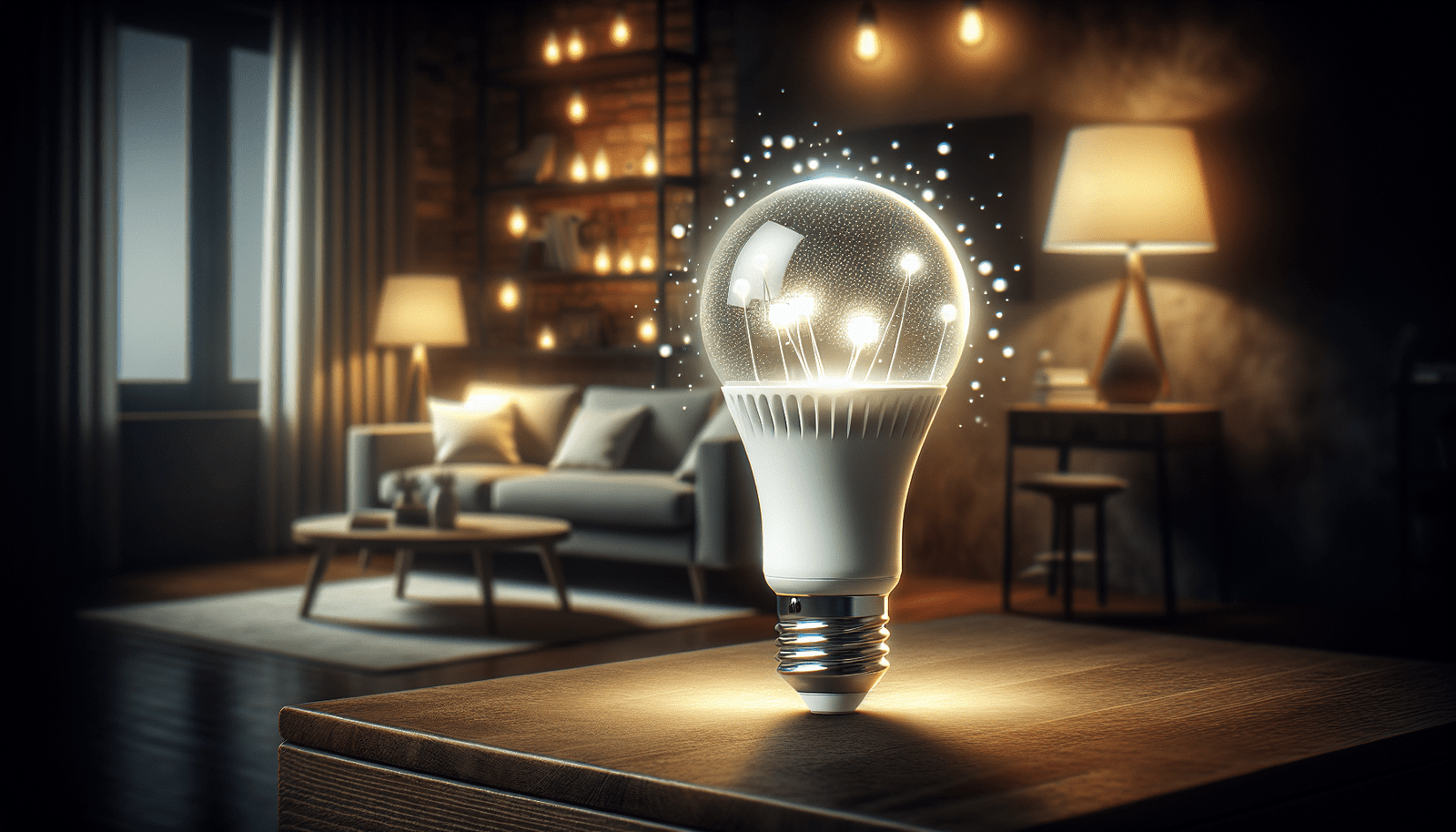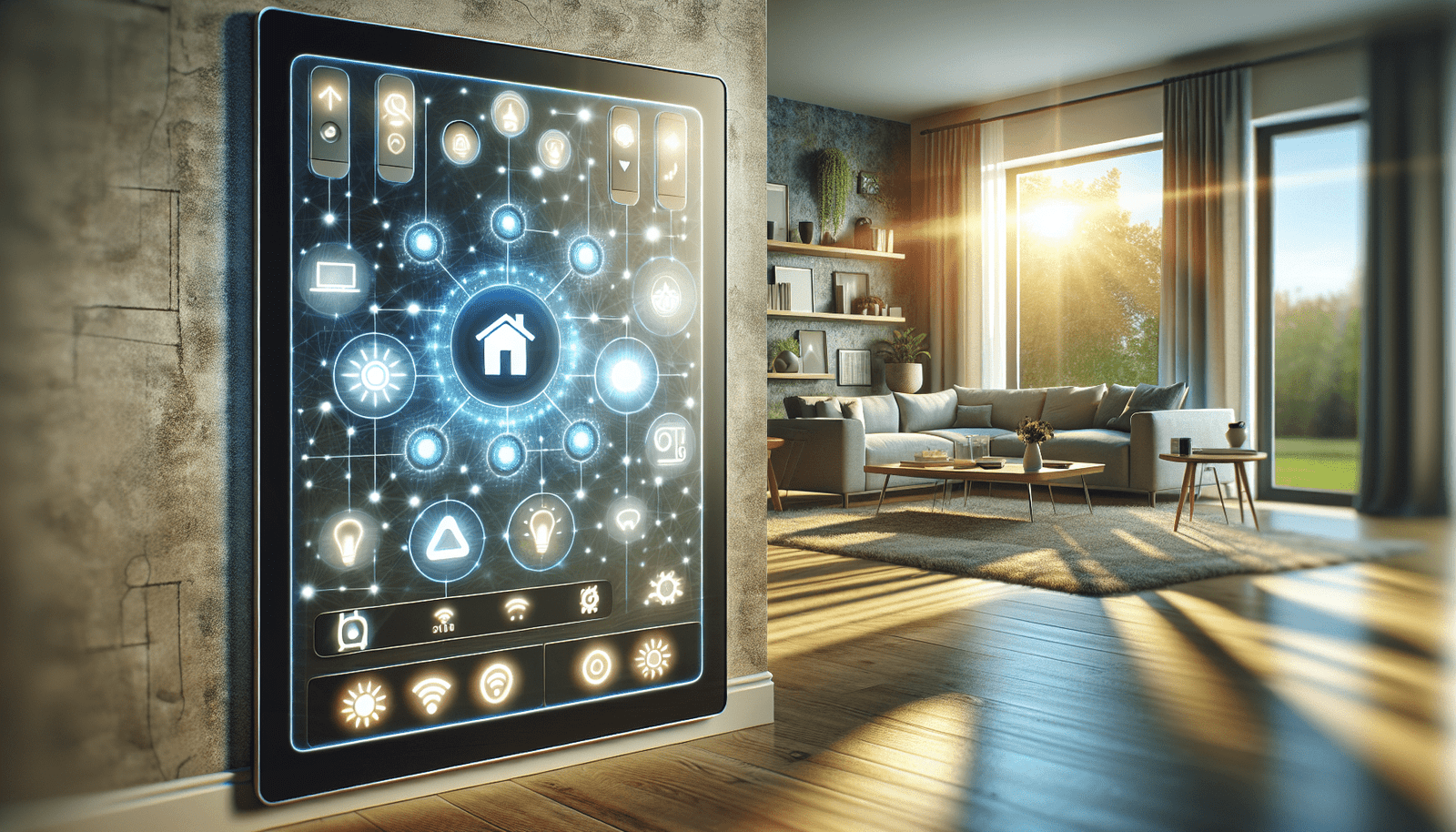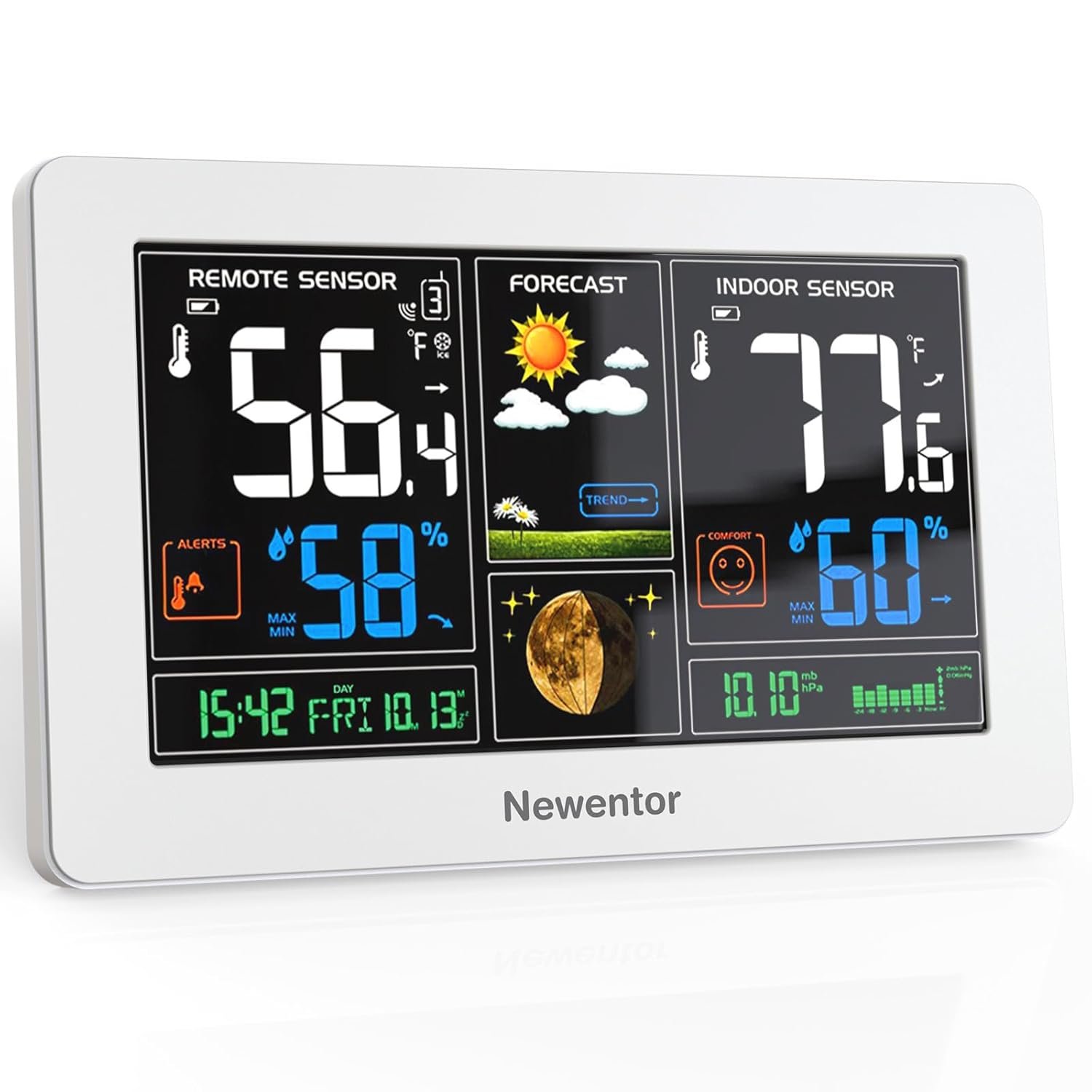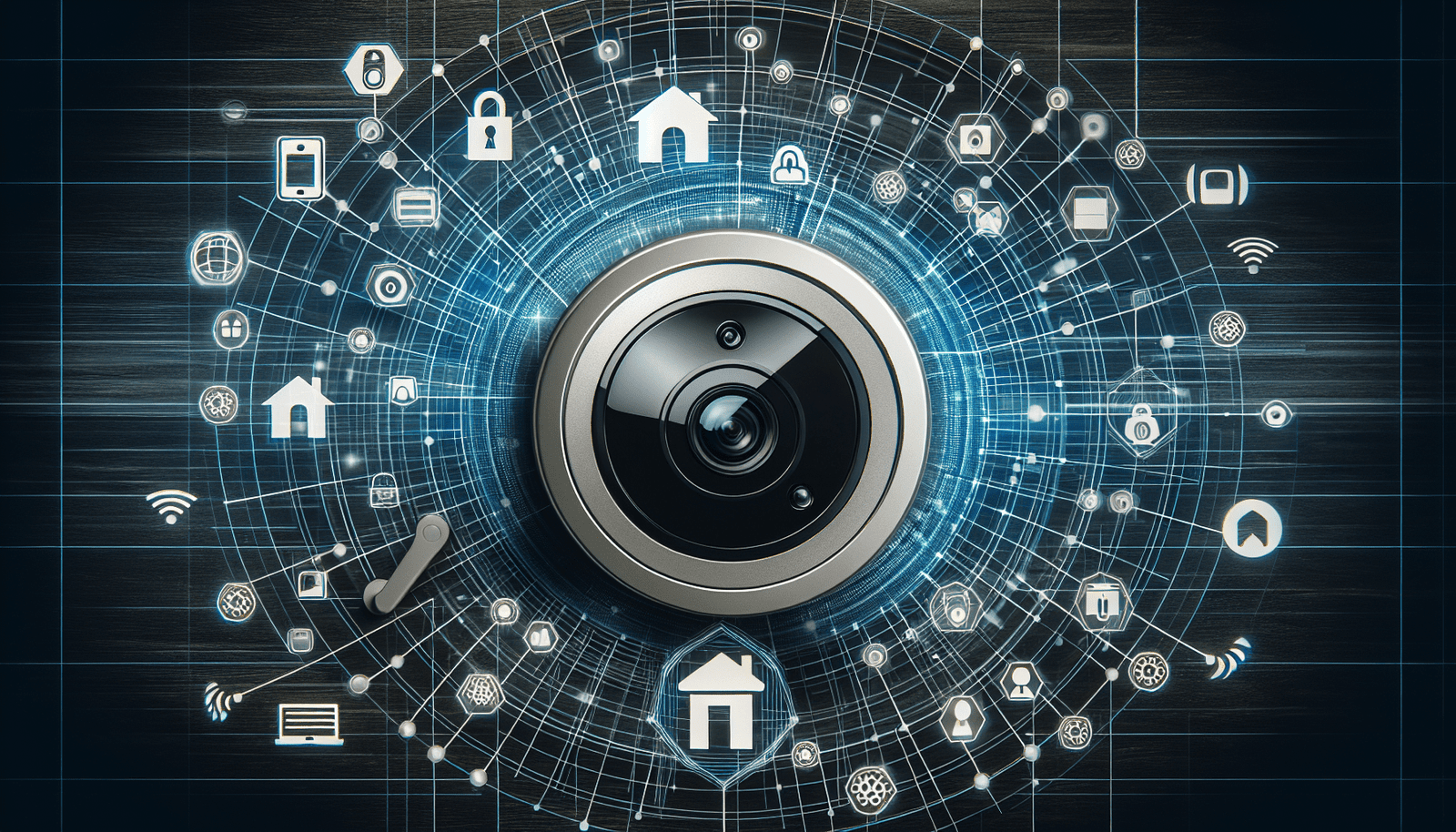Do you ever wonder how lighting could transform your home into a future-ready haven? Smart home lighting is changing the way you interact with your living space by offering convenience, efficiency, and a touch of modern elegance. Imagine coming home to a well-lit home where the lighting adjusts automatically to your mood and schedule. In this article, you will learn about the various aspects of smart home lighting and how it can create a connected living environment. Whether you are a homeowner, renter, or real estate investor, this guide will provide you with the insights needed to make informed decisions about integrating smart lighting into your living space.
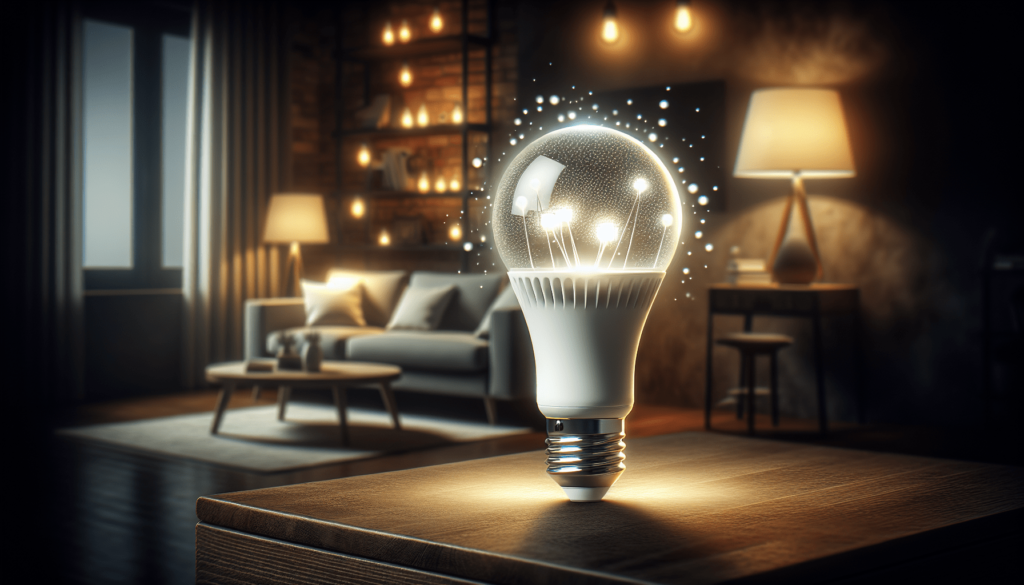
Understanding Smart Home Lighting
Smart home lighting is a system that allows you to control your lights remotely using your smartphone, voice assistants, or through automation. This type of lighting uses smart bulbs or a smart lighting control system to give you unprecedented control over how your home is lit. By integrating with various smart home platforms, these systems enable customized lighting solutions tailored to your lifestyle and preferences.
The Basics of Smart Lighting Technology
At its core, smart lighting technology comprises smart bulbs, switches, and control systems that communicate with each other through wireless networks. These components can be connected via Wi-Fi, Bluetooth, or dedicated smart home hubs. Smart lighting solutions often leverage technologies like LEDs for greater energy efficiency, offering not just utility but also a means of aesthetic enhancement and mood setting.
Key Components of Smart Lighting
-
Smart Bulbs: These are LED bulbs that can be controlled remotely, allowing for adjustments in brightness and color.
-
Smart Switches and Dimmers: They replace traditional switches and can control lights via apps or voice commands.
-
Smart Hubs and Bridges: Devices like Philips Hue Bridge or Samsung SmartThings Hub help connect and control all your smart devices.
-
Control Apps and Voice Assistants: Platforms like Amazon Alexa, Google Assistant, and Apple’s Siri can control lighting with simple voice commands.
Cost and Value Considerations
When considering smart lighting, it’s crucial to evaluate both the initial investment and the long-term benefits. While the upfront cost of smart bulbs and switches can be higher than traditional options, the potential savings on energy bills and increased property value make them a worthwhile investment.
Installation Costs and Options
Smart lighting installation costs can vary depending on your home’s structure and the type of system chosen. While some solutions require professional installation, many are do-it-yourself (DIY) friendly, allowing you to upgrade incrementally according to your budget.
Long-term Investment and Energy Savings
Smart lighting systems offer energy savings through features such as scheduling, motion detection, and occupancy sensors. These features ensure lights are only on when needed, reducing electricity wastage and utility bills. Over time, these savings can offset the initial cost of installing smart lights.
Comparisons and Examples
Before choosing smart lighting solutions, it’s helpful to compare various products and understand real-world applications. Here’s a comparison of popular smart lighting products based on their features and benefits:
| Feature | Philips Hue | LIFX | TP-Link Kasa Smart |
|---|---|---|---|
| Compatibility | Works with Alexa, Google Assistant, Apple HomeKit | Works with Alexa, Google Assistant | Works with Alexa, Google Assistant |
| Color Options | 16 million | 16 million | Dimmable (white) |
| Installation Complexity | Requires a bridge | Hub-free (Wi-Fi) | Easy setup (Wi-Fi) |
| Energy Efficiency | High | High | High |
These examples illustrate how you can select products based on compatibility, features, and ease of installation to create a seamless home lighting environment.
Real-World Use Cases
Imagine setting your lights to automatically dim as the evening progresses, simulating a sunset effect that promotes relaxation and prepares your body for rest. Alternatively, your morning can be brightened by smart lighting that simulates natural daylight, gently waking you up and enhancing your mood. These are just a few ways smart lighting can personalize your space and daily routines.
Practical Setup Guides
Setting up smart home lighting can be a straightforward process if approached methodically. Here’s a step-by-step guide to help you get started:
Choose Your Smart Lighting System
- Determine Your Needs: Consider how much control you want—do you desire color-changing capabilities or simple dimming functions?
- Evaluate Compatibility: Ensure the system you choose integrates with existing devices such as your smartphone and voice assistant.
Installation Steps
- Replace Existing Bulbs: Simply screw in smart bulbs in place of your regular bulbs.
- Install Smart Switches/Dimmers: For a more integrated approach, replace your conventional light switches with smart versions.
- Connect to Wi-Fi or a Hub: Use your home’s Wi-Fi network or a dedicated smart hub to connect and control the lights.
- Set Up Control Options: Download the necessary apps and link them with your lighting system; connect voice assistants if desired.
Customize and Automate
- Utilize scheduling features to have lights turn on or off at specific times.
- Create routines such as a “Good Night” command that dims lights and adjusts the climate in your home.

Security and Privacy Factors
With the convenience of smart lighting comes potential security and privacy concerns. Unsanctioned access or data breaches can compromise personal information or allow unauthorized control.
Mitigating Risks
- Utilize Secure Networks: Always use a secure Wi-Fi network with strong encryption.
- Change Default Settings: Update default passwords and regularly review permission settings on apps.
- Regular Software Updates: Keep your apps and devices updated to protect against vulnerabilities.
Safety Features
Smart lighting systems often have built-in safety features, such as surge protection and the ability to monitor energy usage, preventing overheating and electric faults.
Energy Efficiency and Sustainability
Energy efficiency is a significant advantage of smart lighting, reducing environmental impact while saving money.
How Smart Lighting Contributes to Energy Conservation
By allowing you to control when and how your lighting is used, smart systems help to minimize unnecessary energy consumption. Scheduling, occupancy sensors, and dimming capabilities all play a part in creating a more sustainable living environment.
The Role of LEDs in Sustainability
LEDs are the workhorses of smart lighting. They use a fraction of the energy compared to incandescent bulbs, have a longer lifespan, and provide a wide range of colors without additional filters.
Compatibility and Connectivity
Choosing smart lighting compatible with your existing technology is essential for creating a harmonious smart home ecosystem.
Understanding Connectivity Options
- Wi-Fi: Offers flexibility and ease of use, removing the need for additional hardware.
- Zigbee and Z-Wave: Require hubs but provide reliable communication between devices with minimal interference.
Platforms and Voice Assistants
Integrating with platforms like Amazon Alexa or Google Assistant allows you to create voice commands and automate systems. Before investing, ensure the lighting system is compatible with these platforms for seamless connectivity.
Future-Proofing and Innovation
The smart lighting landscape is rapidly evolving, with new technologies and trends emerging that could further enhance your smart home ecosystem.
Emerging Trends in Smart Lighting
We’re seeing growth in adaptive lighting, which adjusts to natural light conditions, and advancements in AI that predict your lighting needs based on past behaviors. These innovations promise to make future smart home systems even more intuitive and responsive.
Ensuring Longevity and Upgradability
Opt for systems with open APIs and strong manufacturer support to ensure you can seamlessly integrate future technologies and updates without needing to overhaul your entire system.
Conclusion
Smart home lighting is gradually becoming an essential component of the modern home, providing convenience, security, and energy efficiency. Whether you’re looking to upgrade your home permanently, or you’re a renter seeking temporary enhancements, exploring smart lighting solutions can be a rewarding venture.
By integrating smart lighting with other smart home devices, you create a cohesive and efficient living space that aligns with your lifestyle and budget. The time is ripe to transform your living environment with the power of smart lighting. With careful planning and informed choices, you can ensure that your investment pays dividends in comfort, cost savings, and home value. So, are you ready to light up your home smartly?
